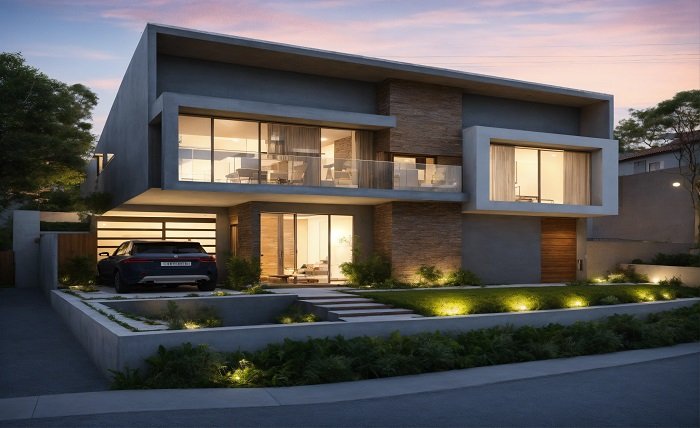If you’ve ever wandered through the lumber aisle trying to choose between marine plywood and exterior plywood, you’re not alone. They might look similar, feel similar, and even sound like they serve the same purpose — but don’t be fooled. While both are designed to handle the elements better than standard plywood, there are key differences that can make or break your project.
So, what’s the real difference between marine plywood and exterior plywood? Let’s dive into the details so you can make the right decision with confidence — and avoid costly mistakes.
The Core Difference: Quality and Voids
At the heart of every plywood sheet is a stack of thin wood veneers. The way these layers are assembled is where marine and exterior plywood start to differ.
- Marine Plywood: Built to the highest standards, marine plywood uses top-grade wood veneers with no voids or gaps in the layers. This makes it stronger, more durable, and less likely to trap moisture inside.
- Exterior Plywood: While it also uses water-resistant glue, the wood veneers may have some voids. These small gaps can allow moisture in, eventually leading to rot or delamination if not sealed properly.
Bottom line: Marine plywood is stronger and more uniform — built for demanding, high-moisture environments.
Glue Game: Both are Waterproof (Kind Of)
Here’s where people often get confused. Both marine and exterior plywood use waterproof adhesives. So what’s the difference?
- Marine Plywood: Uses high-quality phenol-formaldehyde glue, which is fully waterproof and heat-resistant. It’s designed to hold even when submerged.
- Exterior Plywood: Also uses waterproof glue, but the quality of the bond can vary depending on the grade and manufacturer. It’s water-resistant, not waterproof.
If your plywood will be regularly exposed to standing water, marine plywood is your best bet.
Durability Under Pressure
Marine plywood is designed for extreme conditions — think boats, docks, and humid coastal structures. It won’t swell, delaminate, or warp as easily as exterior plywood.
Exterior plywood, on the other hand, can handle rain, humidity, and general outdoor exposure but not continuous soaking or submersion. Over time, with repeated wet-dry cycles, it’s more likely to break down.
Cost Comparison: You Get What You Pay For
Here’s the tough truth: marine plywood can cost 2–3 times more than exterior plywood. That’s because it goes through stricter manufacturing processes and uses higher-quality wood.
If you’re working on a project that doesn’t require marine-level durability (like outdoor furniture, garden sheds, or general exterior trim), then exterior plywood might be just fine and easier on your wallet.
But if you’re building a boat, dock, or a bathroom subfloor where moisture is a constant threat spend the extra and go marine.
Applications: Where Each One Shines
Use Marine Plywood For:
- Boat building and repair
- Docks, decks near water
- Bathroom or kitchen subfloors
- Saunas or humid rooms
- Any structure with prolonged water exposure
Use Exterior Plywood For:
- Outdoor furniture
- Sheds, barns, and garages
- Fencing and gates
- Roofing underlayment (when protected)
- General home exterior applications
The Finish Factor
Whatever plywood you choose, don’t skip the finish. Even marine plywood benefits from sealing, staining, or painting to protect it from UV rays, scratches, and prolonged moisture.
Exterior plywood must be sealed or painted if it’s going to last outdoors — especially around edges and joints where moisture can sneak in.
Final Verdict
So, what’s the real difference between marine plywood and exterior plywood?
It comes down to quality, durability, and intended use. Marine plywood is built for battle — tough, water-resistant to the core, and designed for high-stakes projects. Exterior plywood is a solid choice for everyday outdoor projects that need weather resistance, but not full-on waterproofing.
If your project lives by the water, go marine. If it’s just living in the backyard, exterior might be all you need.
Choose wisely because in the world of wood, what you don’t see (like voids or glue quality) can matter the most.













